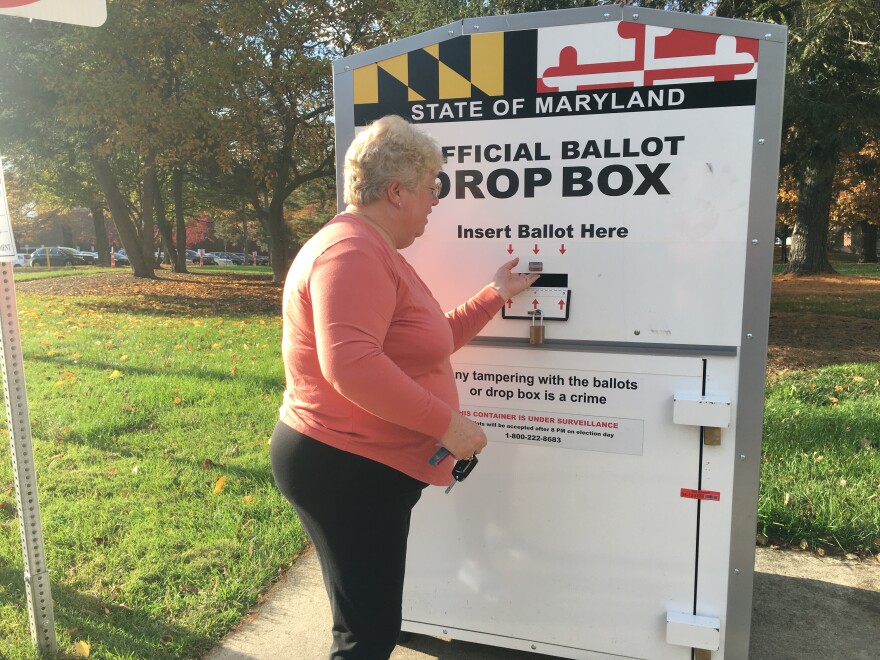Here are answers to frequently asked questions about mail-in ballots in Maryland.
What’s the difference between absentee ballots and mail-in ballots?
It’s the same thing. Historically absentee ballots have been used by members of the U.S. armed services serving overseas or people who expect to be out of town or otherwise unable to vote in-person on Election Day. However, mail-in ballots have been more widely adopted among the general public in recent years, especially since the start of the coronavirus pandemic.
When is the deadline to submit a mail-in ballot?
Mail-in ballots must be postmarked or delivered to an official drop box in the jurisdiction where you live by 8 p.m. on Election Day, Nov. 8.
When are local state boards of elections across Maryland expected to begin canvassing ballots?
The following jurisdictions are expected to begin counting mail-in ballots before Election Day: Allegany County, Baltimore City, Baltimore County, Calvert County, Frederick County, Howard County, Montgomery County, Prince George’s County, Saint Mary’s County, and Washington County.
The following counties won’t begin processing mail-in ballots until Nov. 10, according to the Maryland State Board of Elections: Anne Arundel County, Caroline County, Carroll County, Cecil County, Charles County, Dorchester County, Garrett County, Harford County, Kent County, Queen Anne's County, Somerset County, Talbot County, Wicomico County, and Worcester County.
What happened during the legal battle about mail-in voting?
During the last legislative session, Maryland lawmakers passed a bill that would allow mail-in ballots to be counted before Election Day, but it was vetoed by Gov. Larry Hogan.
In August, the Maryland State Board of Elections voted unanimously to pursue an emergency court order to allow counties statewide to begin counting mail-in ballots as early as Oct. 1. The state board was concerned that a large volume of mail-in ballots would delay final election results until January 2023.
The Montgomery County Circuit Court ruled that county election officials could begin canvassing mail-in ballots before Election Day, but Republican nominee for governor Dan Cox appealed the ruling. Cox ultimately took his appeal to the state’s highest court, but lost in early October.
Although local election officials can now canvass ballots early, mail-in ballot results won’t be shared until after the polls close at 8 p.m. on Nov. 8.
What has voter turnout looked like for mail-in ballots?
During a typical midterm election, mail-in ballots account for a small fraction of votes.
For example, during the 2018 midterm general election, mail-in ballots accounted for 118,215 — just over 5% — of the more than 2.3 million ballots canvassed statewide.
But this year, state election officials expect to receive more mail-in ballots than in any prior election other than the 2020 election, which occurred at the height of the COVID-19 pandemic. More than 1.5 million Marylanders submitted mail-in ballots in the November 2020 election.
As of Nov. 2, 629,110 Maryland voters have been sent mail-in ballots for the general election, and election officials have received 308,580 completed ballots back. Voters can request mail-in ballots in person at their local boards of election offices as late as Election Day.
A small percentage of mail-in ballots are rejected during each election cycle for various reasons, state data shows.
During the July primary this year, there were 514,570 ballots sent to voters, 346,114 returned, and 342,655 accepted statewide.









